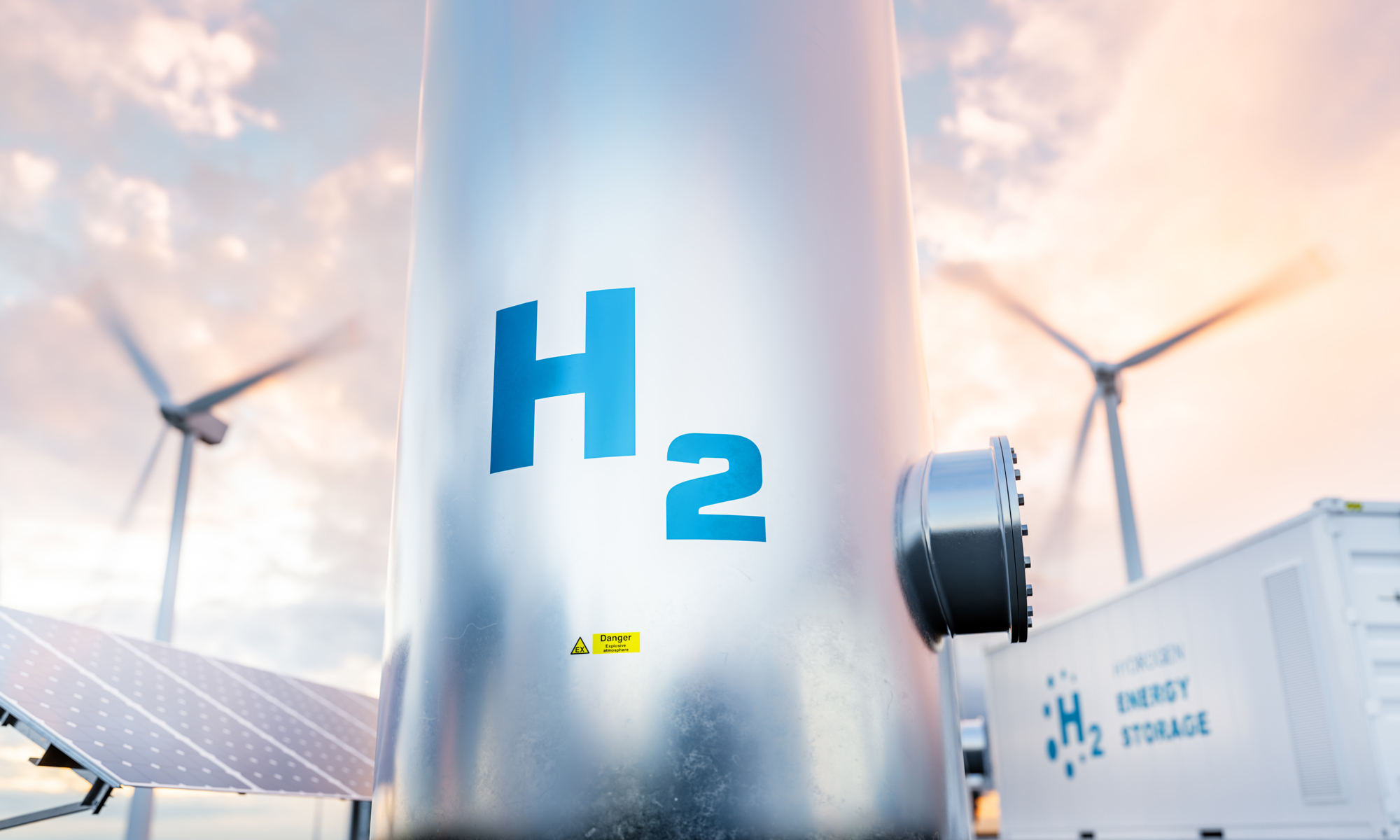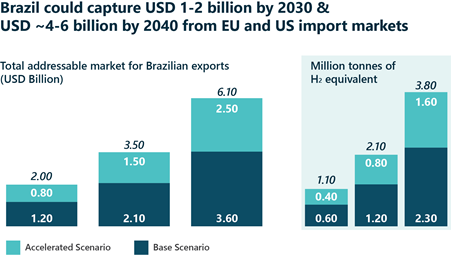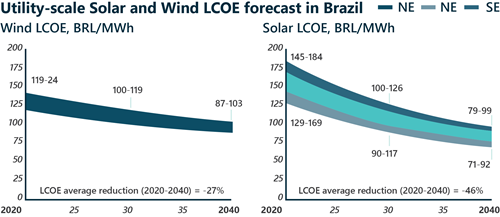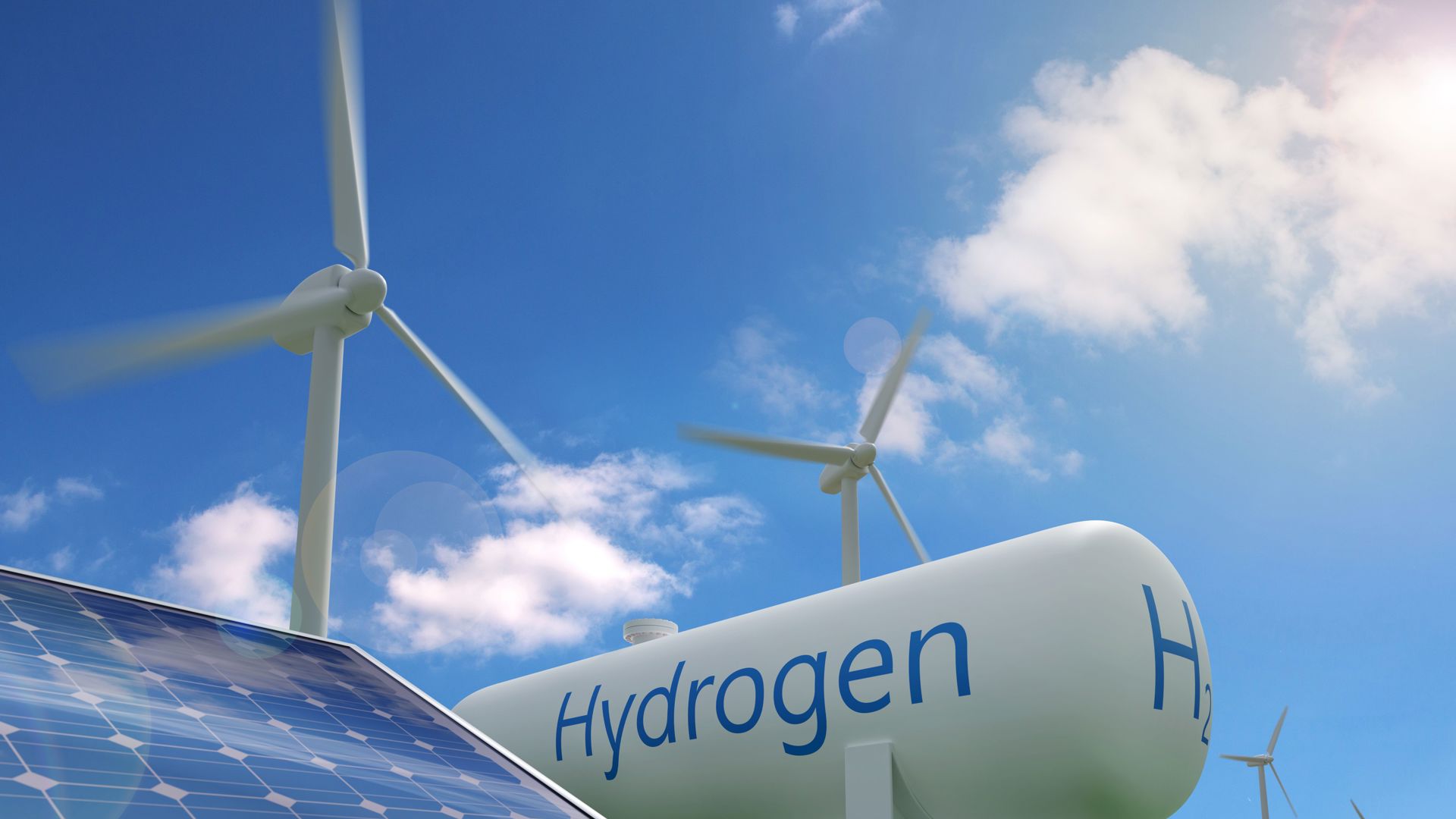Project
Countdown to a Green Hydrogen Economy in 2030. What does Brazil need to do to deliver on its ambitions?

Project
As part of the H2Brasil programme, NIRAS is advising government authorities and industry on the sustainable production potential for green hydrogen
With the war in Ukraine driving up energy prices in Europe and pressure mounting on governments to reduce their dependency on Russia for gas imports, the demand for sustainable green hydrogen – and Brazil’s opportunity to meet it – has never been higher, especially when backed by strong international cooperation.
Together with renewable fuels and electrification, many experts consider hydrogen to be a significant part of the climate crisis solution. In Brazil, green hydrogen – a truly carbon-free fuel – is produced from water electrolysis or by reforming biomass and biofuels, such as ethanol and methane, which are abundant in the country. According to the Environment and Sustainability Thematic Council (COEMAS) of the Brazilian National Industry Confederation, Brazil has the resources to be a world class leader in the production of green hydrogen and the storage of renewable energy, contributing to the country’s own energy transition and decarbonisation pathway.
For the Director General of Siemens Energy Brazil, André Clark, the country has aspects that can make it "unbeatable" in the production of hydrogen, such as being the largest producer of hydroelectric power, having a very advanced regulatory system in renewable energy generation and having its main trading partners, such as the United States, the European Union and China, with green recovery plans. "Brazil is already a world champion in this game. Imagine if it decides to invest money in it?" Clark asks.
Today, “gray”, “brown” and “black” hydrogen is almost completely supplied by fossil fuels and used mostly in oil refining and fertiliser production. It represents about 3% of greenhouse gas emissions.
“Blue” hydrogen is made from natural gas but its production involves the capture of CO2.
“Green” hydrogen is produced through electrolysis and electricity from wind, solar and hydro power.

However, while the potential is great, so are the barriers. COEMAS President, Marcelo Thomé points to technological aspects that remain to be addressed, high costs, transportation and storage challenges as well as the need to develop a proper institutional, legal and regulatory framework.
Untapping huge potential
To tackle some of these challenges, in 2021 the Deutsche Gesellschaft für Internationale Zusammenarbeit (GIZ) GmbH launched the €34 million H2Brasil Programme for Green Hydrogen on behalf of the German Federal Ministry for Economic Cooperation and Development and the Ministry of Economics and Climate Change. As one of five outputs to be reached by September 2023 under the programme, NIRAS’s efforts are focused on the structural conditions for building a green hydrogen economy. Other outputs are centred around dissemination, capacity building, innovation, and market expansion for green hydrogen.
Working with the Ministry of Mines and Energy (MME), the Energy Research Company (EPE), the Brazilian Electric Regulatory Agency (ANEEL) and the Brazilian Electric System Operator (ONS), NIRAS is advising on and supporting in the identification of the production potential of green hydrogen from different renewable energy sources such as wind, solar, hydro and biomass, all of which are widely available across Brazil. As the country’s green hydrogen production potential will increase over time, several scenarios are being forecasted up to 2030 and 2050 outlining important impacts to be considered in the planning of electricity and gas grids expansion in the country. The project team is also analysing the domestic economy’s demand for green and low carbon hydrogen for industrial processes, such as steel, cement, glass and ceramic production, as well as transport. Brazil’s export potential is equally on the radar. Both internal and external demand for low carbon and green hydrogen is expected to have a positive impact on employment creation and economic growth.


To this end, a comprehensive international benchmark is being drawn up to learn from the strategies and policy measures of other countries in the region and worldwide. This will enable Brazil to identify which countries could be partners, customers, competitors or potential role models for the development of a hydrogen economy in the country. The learnings from the benchmark will pave the way for collaboration with relevant stakeholders to develop a robust regulatory strategy and support the national programme for hydrogen.
In the northeast of Brazil, stakeholders are already mobilising for closer coordination. In line with the Northeast Regional Development Plan, the Development Superintendency of the Northeast (SUDENE), which is responsible for economic development policy in the northeastern coastal and Sertão regions, recently announced its intention to strengthen green hydrogen production in the region. SUDENE is considering participating in an initiative that includes a digital platform and international event bringing together interested parties working on regional economic development around the topic “energy of the future”.
The Suape Industrial Port Complex in Pernambuco is collaborating with the Port of Pecém in Ceará, where a green hydrogen plant with a production capacity of 250 Nm3/h should start operating by the end of this year. In 2022, several Memorandum of Understanding MoU have been signed proposing major investments in the development of the hydrogen economy in Brazil, including the MoU announced for the Port of Pecém in Ceará, the MoU for Camaçari Industrial Complex in Bahia, Açu Port, in Porto Suape and MoU announced for the federal states of Rio Grande do Norte and Rio Grande do Sul.
According to a McKinsey & Company study, the Brazilian market for energy production from green hydrogen has potential revenue estimated between US$ 15 and 20 billion in 2040.
The survey also showed that Brazil is among the most competitive countries for green hydrogen production in the world. The levelized cost of the Brazilian green hydrogen (LCOH4) would be around 1.50 USD/kg of H2 in 2030, a value compatible with the best locations of the USA, Australia, Spain and Saudi Arabia. The value should drop to 1.25 USD/kg of H2 in 2040.
Despite the challenges, Brazil needs to prepare itself to develop this promising technology, which promises to generate new business opportunities and social benefits.
Marcelo Thomé, President of the Environment and Sustainability Council from the National Industry Confederation (CNI) in Brazil.
Mapping risks and opportunities
While Brazil’s future investments in low carbon and green hydrogen are promising, they depend greatly on the technology’s carbon reduction potential, the assessment of possible environmental effects from the production process, and worldwide certification standards that could have an effect on the Brazilian market. Studies will be conducted in this respect and a platform for exchange of information and experience among stakeholders will be established. Furthermore, the environmental and social assessment of a green hydrogen economy is critical to identify opportunities and risks related to the production as well as the positive knock-on effect such an economy would have on employment and society in general. These analyses will be complemented by two travel missions and study tours to Chile in 2022 and Germany in 2023.
Tackling investment obstacles and increasing project bankability
Regardless of the optimism around Brazil’s potential to be a world leader in low carbon and green hydrogen, the barriers that hinder financing, investment and project implementation need to be urgently addressed – especially considering the current global situation. Using real costs approximations, the project team will evaluate the competitiveness and profitability of at least five projects in Brazil that involve major key stakeholders from industry and research and development. The aim is to identify bankable projects that will serve as good practice guides on how companies and projects can access finance easier and how developments banks in Brazil and abroad can identify hydrogen project financing opportunities and risks. Matchmaking events are already in the works and an online platform (h2verdebrasil.com.br) has been launched to position Brazil as a strategic partner in the green hydrogen economy by sharing information and bringing relevant actors together to encourage networking and collaboration, identify new businesses, and create a joint understanding of the requirements and demands around the globe. These efforts all form part of the project’s planned financing roadmap for green hydrogen investments up to 2030.
For further details on this project, contact Mr Felipe Andrés Toro, Team Leader – Developing a Green H2 Economy in Brasil at felipe.toro@niras.com

